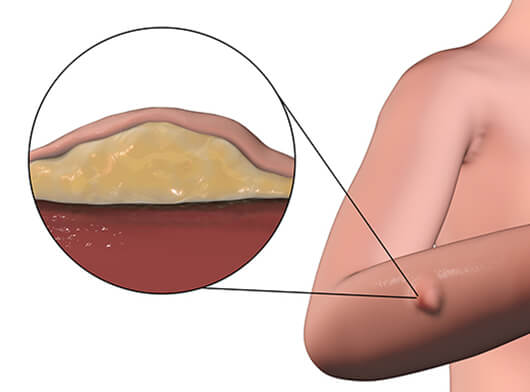Understanding Sarcoma and Soft Tissue Sarcoma: A Patient’s Guide
Sarcoma is a complex term encompassing a group of cancers that develop in the body’s soft tissues. These tissues include muscles, fat, nerves, blood vessels, lymph vessels, and bones (except for the bone marrow). While less common than carcinomas (cancers that start in epithelial tissues like skin or breast), sarcomas can occur anywhere in the body.
This article aims to empower you with knowledge about sarcoma, particularly focusing on soft tissue sarcoma, the most common type. We’ll explore different aspects, including:
- What is sarcoma?
- Types of sarcoma
- Soft tissue sarcoma: A closer look
- Signs and symptoms of sarcoma
- Diagnosing sarcoma
- Treatment options for sarcoma
- Surgery
- Radiation therapy
- Chemotherapy
- Targeted therapy
- Immunotherapy
- Living with sarcoma
- Resources for sarcoma patients and caregivers
What is Sarcoma?
Sarcomas arise from the uncontrolled growth of cells within the body’s soft tissues. These abnormal cells divide rapidly, forming tumors that can invade surrounding tissues and potentially spread to other parts of the body (metastasis). Different types of sarcoma can develop, each with varying characteristics and behaviors.
Types of Sarcomas
There are over 150 subtypes of sarcoma, categorized based on the specific type of soft tissue from which they originate. Here’s a breakdown of some common types:
- Fibrosarcoma: This originates in fibrous connective tissues.
- Liposarcoma: This develops in fat tissues.
- Leiomyosarcoma: This arises in smooth muscle tissues (found in organs like the intestines and blood vessels).
- Rhabdomyosarcoma: This starts in skeletal muscle tissues.
- Synovial sarcoma: This develops in the synovium, the lining of joints.
- Angiosarcoma: This originates in the lining of blood vessels or lymph vessels.
- Osteosarcoma: This is a bone cancer, the only sarcoma not classified as a soft tissue sarcoma.
Soft Tissue Sarcoma: A Closer Look
As mentioned earlier, soft tissue sarcoma is the most frequent type of sarcoma. It can arise anywhere within the body’s soft tissues, and the specific location can influence symptoms and treatment approaches. Some common sites for soft tissue sarcomas include:
- Arms and legs
- Abdomen
- Chest wall
- Retroperitoneum (the area behind the abdomen)
Signs and Symptoms of Sarcoma
Early sarcoma may not cause any noticeable symptoms. However, as the tumor grows, you might experience:
- A lump or mass under the skin that feels firm or painless in the beginning
- Swelling in an extremity (arm or leg)
- Persistent pain in a specific area
- Bone pain (in some cases)
- Unexplained weight loss
- Fatigue
Diagnosing Sarcoma
If you experience any of the above symptoms, it’s crucial to consult your doctor for a thorough evaluation. The diagnostic process for Sarcoma may involve:
- Physical examination: Your doctor will feel for any lumps or abnormalities.
- Imaging tests: X-rays, CT scans, and MRIs can help visualize the tumor’s location and size.
- Biopsy: A small tissue sample is extracted from the tumor and examined under a microscope to confirm the diagnosis and identify the specific type of sarcoma.
Treatment Options for Sarcoma
The most suitable treatment for sarcoma depends on various factors, including the type and stage of the cancer, size and location of the tumor, and your overall health. The goal of treatment may be curative (aiming for a complete cure) or palliative (relieving symptoms and improving quality of life).
Here’s an overview of the primary treatment options for sarcoma:
Surgery: Whenever possible, surgery is the preferred treatment for sarcoma, aiming to remove the entire tumor with clear margins (healthy tissue surrounding the tumor). The extent of surgery depends on the location and size of the tumor. In some cases, limb-sparing surgery might be performed to preserve an affected limb while removing the cancerous tissue. Reconstruction procedures may be necessary to restore functionality after extensive surgery.
Radiation therapy: High-energy X-rays or other forms of radiation are used to kill cancer cells. Radiation therapy can be administered before surgery (neoadjuvant) to shrink the tumor and facilitate removal, or after surgery
Chemotherapy: Powerful drugs are used to kill cancer cells throughout the body. Chemotherapy can be given before surgery (neoadjuvant) to shrink the tumor or after surgery (adjuvant) to eliminate any remaining cancer cells. It can also be used as the primary treatment for sarcomas that are inoperable or have already spread to other parts of the body (metastatic sarcoma). Chemotherapy drugs are typically administered intravenously (through a vein) or orally (in pill form).
Targeted therapy: These drugs target specific molecules involved in the growth and survival of cancer cells. Targeted therapies may be a promising option for some types of sarcoma, particularly in advanced stages or when other treatments haven’t been successful.
Immunotherapy: This treatment approach helps the body’s immune system recognize and attack cancer cells. Immunotherapy for sarcoma is still under development, but some newer drugs show promise in stimulating the immune system to fight the cancer.
Living with Sarcoma
A sarcoma diagnosis can be overwhelming, but there are ways to manage the condition and cope with the emotional challenges. Here are some tips:
- Seek support: Connect with other sarcoma patients and survivors through support groups or online communities. Sharing experiences and learning from others can be incredibly helpful.
- Maintain a healthy lifestyle: Eating a balanced diet, exercising regularly, and getting enough sleep can improve your overall well-being and potentially aid in recovery.
- Manage stress: Stress can worsen the effects of cancer and its treatment. Relaxation techniques like yoga or meditation can help manage stress and improve your emotional well-being.
- Communicate openly with your doctor: Ask questions, express your concerns, and discuss all available treatment options. Building a strong doctor-patient relationship is crucial for effective management of your condition..
Additional Points to Consider (Optional):
- This article provides a general overview of sarcoma and treatment options. It’s crucial to consult with your doctor for personalized advice and treatment plans tailored to your specific situation.
- Clinical trials are ongoing to explore new and more effective treatments for sarcoma. If you’re interested in participating in a clinical trial, discuss this possibility with your doctor.
- The prognosis for sarcoma varies depending on the specific type and stage of the cancer. Early detection and treatment significantly improve the chances of a successful outcome.


